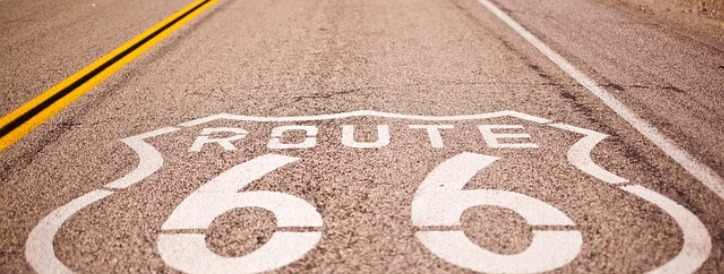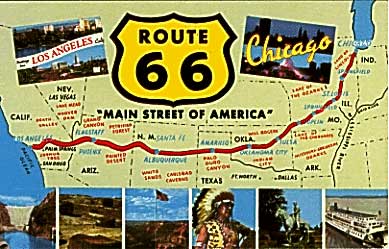Most of us who traveled “Main Street of America” during its heyday had no thoughts of creating memories or making history. We were simply on our way from one place to another. But, without realizing it at the time, we discovered adventure, saw new vistas, and created memories.
This experience is different for each of us. Even today, there is a spirit that continues to draw people from all over the world eager to create their own uniquely different experiences. They, too, are creating memories. This Memory album is dedicated to those that made that trip then as well as those who rediscover it today.
They weren’t any different than you and me.
They didn’t know they were creating history.
They were simply traveling from one place to another.
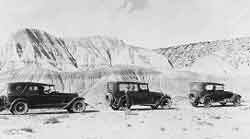 When the highways came, Americans suddenly had somewhere to go. For the first time in American history, you no longer had to be a pioneer or an adventurer to travel from one coast to the other. The ordinary person could make the trip in a matter of days and in relative comfort. They could see how people and places differed from the familiar. Distant relatives were no longer distant. And you could travel just for pleasure.
When the highways came, Americans suddenly had somewhere to go. For the first time in American history, you no longer had to be a pioneer or an adventurer to travel from one coast to the other. The ordinary person could make the trip in a matter of days and in relative comfort. They could see how people and places differed from the familiar. Distant relatives were no longer distant. And you could travel just for pleasure.
Route 66, 2,448 miles of the National Highway System created in 1926, is a journey to the heart of America. . It began in Chicago, on the shores of Lake Michigan, ran through the Middle West, moved on across the Great Plains, opened up the great Southwest and finally ended at the Pacific Ocean. Like the country that the road traversed, history was made and imprints were left by the Roaring Twenties, the Great Depression, the war years, and the exciting fifties and sixties.
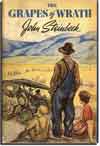 The first people to travel the road in the height of the Depression were driven by desperation rather than adventure. Destitute families trading starvation in the drought-stricken dust bowls of the Middle West for hope in California were vividly portrayed in John Steinbeck’s classic novel The Grapes of Wrath. Woody Guthrie’s ballads added to the sense of loss that is still a part of the lure of “the Mother Road”.
The first people to travel the road in the height of the Depression were driven by desperation rather than adventure. Destitute families trading starvation in the drought-stricken dust bowls of the Middle West for hope in California were vividly portrayed in John Steinbeck’s classic novel The Grapes of Wrath. Woody Guthrie’s ballads added to the sense of loss that is still a part of the lure of “the Mother Road”.
The bombing of Pearl Harbor and war in Europe and Japan created a new use for the road as millions of soldiers traveled in convoys on their way to preserve the American way of life. Joining the war against Hitler meant gasoline rationing and a shortage of new tires. The War Department chose the West as ideal for military training bases partly because of its geographic isolation. Route 66 was responsible for the single greatest wartime manpower mobilization in the history of the country that created thousands of civilian jobs in the munitions and airplane factories that cropped up in California. Throughout the war, there were almost as many hitch-hikers as drivers traveling Route 66.
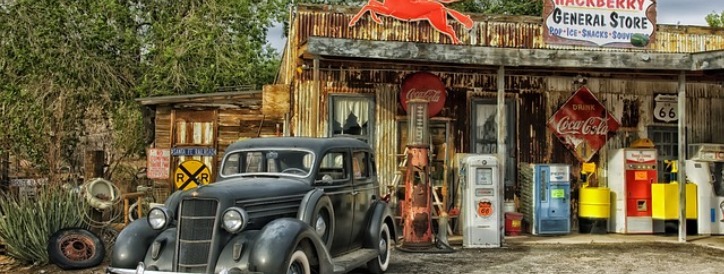
The Magic of Route 66 begins
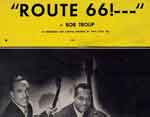 The soldiers who had survived the battlefields returned home to their families on the great highway. During this time period, Jazz composer Bobby Troupe created the classic lyrics to Get Your Kicks on Route 66 to tell the story of his postwar return trip. This was the beginning of the magic that was to become associated with this Main Street of America.
The soldiers who had survived the battlefields returned home to their families on the great highway. During this time period, Jazz composer Bobby Troupe created the classic lyrics to Get Your Kicks on Route 66 to tell the story of his postwar return trip. This was the beginning of the magic that was to become associated with this Main Street of America.
American prosperity was once again on the rise. Rationing ended and new inventions created more opportunities for adventure. An abundance of gasoline as well as the newly introduced “paid vacation system” opened new vistas with travel to National Parks, Indian reservations, Las Vegas, and Hollywood. Air conditioning was the impetus needed to create cities out of small towns in the once hostile desert communities such as Las Vegas, Phoenix, and Albuquerque. The new phenomena of television created even more magic as viewers followed the adventures of Martin Milner as Tod Stiles and George Maharis as Buzz Murdoch, two young guys traveling Route 66 in a 1960 Corvette convertible in search of adventure.
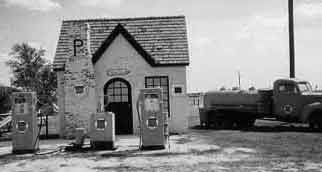 The saga of Route 66, christened “The Mother Road” by Steinbeck is the story of the rise and fall of small “Mom and Pop” owned businesses. In the beginning, small locally-owned gas stations, tourist camps, and diners were built as entrepreneurs provided new opportunities to get the travelers to stop and spend money. New signs were planted along the highway. They ranged from the small Burma Shave jingles to the large bright yellow billboards with red letters proclaiming the location of the next Whiting Brothers Gas Stations. Creativity abounded with neon, wigwam motels, trading posts filled with imported trinkets and postcards picturing a new species called jackalopes.
The saga of Route 66, christened “The Mother Road” by Steinbeck is the story of the rise and fall of small “Mom and Pop” owned businesses. In the beginning, small locally-owned gas stations, tourist camps, and diners were built as entrepreneurs provided new opportunities to get the travelers to stop and spend money. New signs were planted along the highway. They ranged from the small Burma Shave jingles to the large bright yellow billboards with red letters proclaiming the location of the next Whiting Brothers Gas Stations. Creativity abounded with neon, wigwam motels, trading posts filled with imported trinkets and postcards picturing a new species called jackalopes.
Some of these small businesses developed into corporations, building franchised locations in the state after state. Soon travelers deserted the small eateries, gas stations, and tourist camps located in the center of towns for the familiarity of heavily-advertised McDonalds, Whiting Brothers, and Howard Johnson.
The prosperity also foretold the end of the great highway. As travel increased and larger cars were built, the road simply wasn’t adequate for the amount of traffic. By 1970, nearly all of the original Route 66 was replaced by a more efficient four-lane highway. The final section of the original road was replaced by Interstate 40 at Williams, Arizona.
Like the early trails of the late 19th century, Route 66 stimulated the largest westward movement in United States history. Often called “America’s Main Street”, it linked the isolated and under-populated Midwest and Southwest with two important 20th-century cities — Chicago and Los Angeles. Even though the road has disappeared from the maps, it continues to thrive in the hearts of people worldwide.
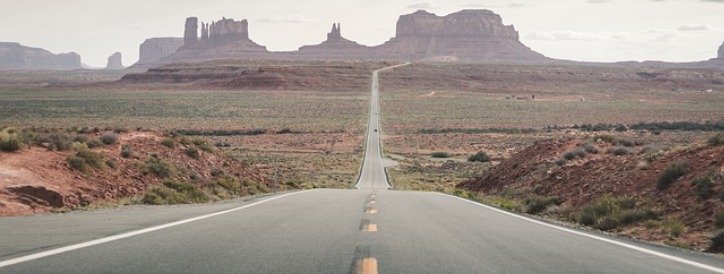
Route 66 The Mother Road
In the late 1930s, the San Francisco News hired a young novelist, John Steinbeck, to write a series of articles about the migrant workers who had left the dust bowls of the southern plans to look for a better life in California.
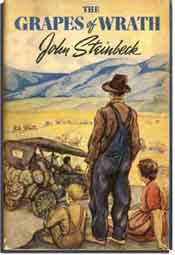
Steinbeck’s newly published Tortilla Flat, a series of humorous stories about Monterey paisanos, was already receiving national acclaim. He wrote a seven-part series which he called “The Harvest Gypsies. But while researching that series, the people themselves captured his imagination and those articles became the foundation of what is considered by many to be his greatest work–The Grapes of Wrath, published in 1939.
This was followed by a series of successful novels, the last being Travels with Charley, a travelogue published in 1962 in which Steinbeck wrote about his impressions during a three-month tour in a truck that led him through forty American states. He was awarded the Nobel Peace Prize in Literature in 1962. He died in New York City in 1968.
Grapes of Wrath was described during the Nobel Peace Prize presentation as “the great work that is principally associated with Steinbeck’s name, the epic chronicle The Grapes of Wrath (1939). This is the story of the emigration to California which was forced upon a group of people from Oklahoma through unemployment and abuse of power. This tragic episode in the social history of the United States inspired in Steinbeck a poignant description of the experiences of one particular farmer and his family during their endless, heartbreaking journey to a new home.”
Get Your Kicks on Route 66
During the Second World War, American soldiers traveled across the USA via route 66 as they were sent off to the European or the Pacific battlefields and again when they returned home. One of these was Captain Robert Troup, Jr. of the US Marines. A former drummer with the Tommy Dorsey Band, this aspiring songwriter and music arranger from Pennsylvania was making the trip once again in 1946 with his wife Cynthia. During the long trip, she leaned over and whispered “get your kicks on Route 66” The phrase stuck with him. and he penned his now-famous song. . In Los Angeles, he performed the song for Nat King Cole, who made it a hit.
In the 1960s, it became the theme song for the popular “Route 66″ TV Series”.
“Get Your Kicks On Route 66”
By Bobby Troup
If you ever plan to motor west,
Travel my way,
take the highway that’s the best
Get your kicks on Route 66.It winds from Chicago to L.A.
More than 2,000 miles all the way
Get your kicks on Route 66.You go through St. Louie, Joplin, Missouri
And Oklahoma City looks mighty pretty.
You’ll see Amarillo, Gallup, New Mexico
Flagstaff, Arizona, don’t forget Winona
Kingman, Barstow, San Bernardino.
Won’t you get hip to this timely tip
When you make that California trip
Get your kicks on Route 66.
Memories of Travel on Route 66
Beginning in Chicago, it wound its way across eight states before ending in Santa Monica California. It created towns, businesses, and memories in the hearts of people from around the world.
Unfortunately, the value of history and memories isn’t as important as modernization to many. But there still exists in towns, along the famous route of the Mother Road, places that have been preserved and can still be enjoyed today. We invite you to submit your recommendations of those places so that others may rediscover and enjoy them.
Places to Stay along Route 66
We welcome recommendations from those of you who have traveled old Route 66 and discovered a place that you think is great.
Flagstaff, Arizona
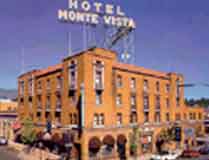 Monte Vista Hotel
Monte Vista Hotel
Although not located on Route 66 itself, this downtown Flagstaff hotel dates back to the days when travelers stopped in Flagstaff on their way to somewhere else.
Monte Vista Hotel
100 N. San Francisco Street
Flagstaff, AZ 86001
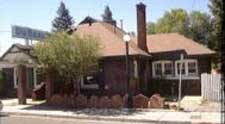 Grand Canyon International Hostel
Grand Canyon International Hostel
The original two-story building was built in 1933 and served as a bunkhouse for travelers. Motel type units were added in 1935 and it was called “The Downtowner Motel”. Today, it has been refurbished as an international hostel offering both dormitory and private rooms. Hostel traveling is a great way to get to know other travelers from around the world.
Grand Canyon International Hostel
19 South San Francisco Street
Flagstaff, AZ
Williams, Arizona
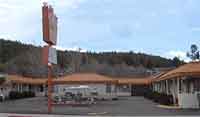 The Grand Motel
The Grand Motel
Listed on the National Register of Historic Places, this motel began as a “Traveler’s Tent Camp” in the 1920s. In 1936, the first motel in Williams–The Del Sue Motor Inn–was built on the site. The name was later changed to The Grand 8 Motel and then just The Grand Motel. It has been refurbished and welcomes travelers.
The Grand Motel
234 East Route 66
Williams, AZ
Winslow, Arizona
 La Posada Hotel
La Posada Hotel
On the National Register of Historic Places, this “hacienda” was designed by Mary Colter (who also designed many of the spectacular buildings at the Grand Canyon.). Built in 1929, it was operated as a hotel and “Harvey House” Restaurant until 1957 when it was closed to the public. The museum-quality furnishings were auctioned off, the magnificent building gutted and turned into office space for the Santa Fe Railroad. The Hotel was purchased just before being demolished by a couple dedicated to its restoration. Much of it has been restored to its former glory but it is an ongoing process. It reopened for guests in November 1997.
303 E. Second Street (Route 66)
Winslow, Arizona 86047
Phone: 928-289-4366
Restaurants on Route 66
MIZ ZIPS CAFE
This Route 66 diner has been serving local customers as well as travelers since 1954. Serving the kind of home-cooked meals at a great price, Miz Zips is the kind of place that we reminisce about. For dinner, try their chicken-fried steak or roast beef. Don’t forget to top it off with a piece of the made-from-scratch pie. You’ll find lots of locals here for breakfast, lunch, and dinner.
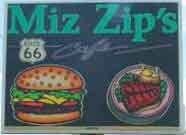 Miz Zips Cafe
Miz Zips Cafe
2924 East Route 66
Flagstaff, AZ 86001
Reader Recommendation
We discovered this place by accident. Driving by, we thought it must be good since there were so many cars there and we were right. The cute little waitress, in her tight jeans and cute smile, made us feel right at home. We were there for breakfast and the pancakes were great and the coffee continually filled. We would definitely stop there again the next time we go through Flagstaff.
A. Roper from Lake Elsinore, CA
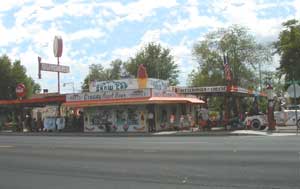
Delgadillo’s Snow Cap Drive-In
First Juan, and now his son, breaks every rule in the “customer relations” book but they have created this “must visit” drive-in located off Highway 40 in the tiny town of Seligman, Arizona. Humor, surprise, and best of all, enjoying every customer are the key ingredients to their success. I could tell you more, but this is one of those places that you MUST see for yourself. While you’re there, drive down the road for a haircut at Delgadillo’s Barber Shop and Gift Store.
Historic Route 66 Attractions
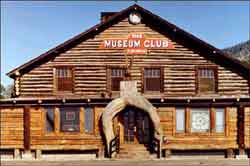 MUSEUM CLUB (aka THE ZOO)
MUSEUM CLUB (aka THE ZOO)
This historic nightspot began as a taxidermy shop and the heads are still hanging on the walls. One of Flagstaff’s most popular night clubs, customers range from college age to seniors looking for a great place to country swing. It is the “in” place for up and coming singers to perform. Past notables include Willy Nelson.
The Museum Club AKA The Zoo
3404 E. Route 66
Flagstaff, AZ 86004
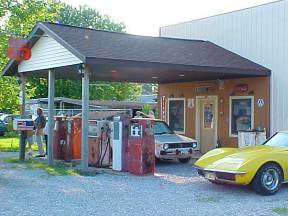 Henry’s Rabbit Ranch
Henry’s Rabbit Ranch
A Route 66 Information Center that has been built for past, present, and future travelers. At this replica of a vintage gas station, you’ll find rabbits, rabbits, and more rabbits…both the hoppin’ kind and the VW kind. Owners Rich and Linda Henry are the kinds of hosts that love visitors. So when you drive through Staunton, take the time to stop and visit for awhile. It’ll be worth your time. Staunton, Illinois
Memories of Travel on Route 66 – 1950s
As a boy, I remember my family leaving Indianapolis, IN, heading to Los Angeles, CA to visit friends. We got on ROUTE 66 in Mitchell, IL and crossed the Mississippi River on the Chain Of Rocks Bridge. I remember being awestruck by the 22-degree turn in the bridge. I remember passing the now-famous Coral Court Motel and the Chain of Rocks Amusement Park just outside St. Louis, MO, that has since been demolished. I remember the Meramec Caverns in Stanton, MO.
I remember going west on ROUTE 66 and all the Mom & Pop diners, the family-owned one-story motels, the roadside attractions, roadside picnic tables where my Mother cooked most of our meals on a Coleman 2 burner stove and how those passing would wave and blow their horns in greeting. I remember the Burma Shave signs, a huge round red barn, the giant Jack Rabbit sporting a saddle and a big sign “Here It Is”. I remember seeing buffalo grazing in the fields. I remember the full service filling stations where gas was 21 cents a gallon. I distinctly remember how beautiful the city of Albuquerque, NM was.
I remember my Dad installing an ice cylinder on the passenger side window of our new 1953 Ford to provide cool air while crossing AZ. I remember the canvas water bags on the fronts of the vehicles to refill the radiators. I remember arriving in Santa Monica after traveling all those miles on ROUTE 66 and we never had to look for another highway the entire way because ROUTE 66 was the Highway.
Now after all these years, I hope to revisit my boyhood memories and once again travel ROUTE 66 this year and would recommend all those interested in this part of history to not delay because the Mainstreet of America is fading fast. I am an avid Route 66 enthusiasts with hundreds of old photos and postcards.
